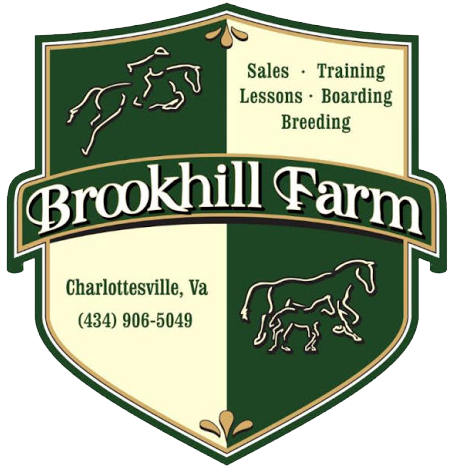Horse events and shows
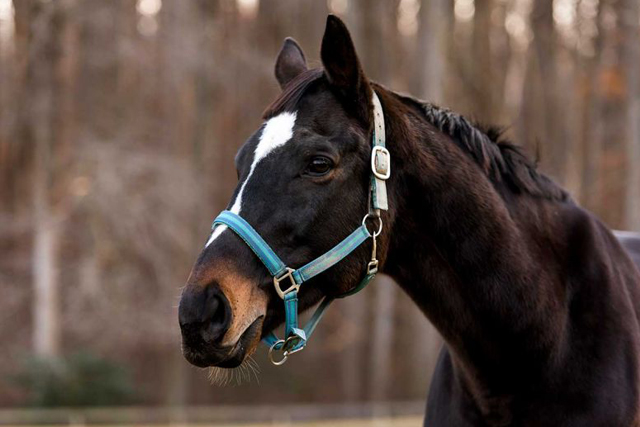
HORSE SHOWS:
Some clients enjoy measuring their skills in horseback riding against their peers during competition at horse shows. It not only provides an opportunity to demonstrate your skills learned but also allows for meeting people who share similar interests and making new lifelong friends.
There are two basic levels of horse shows, local and “A” rated horse shows. The local shows are smaller and are closer in proximity of the farm. It affords the beginner rider the opportunity to show against riders of their caliber and in accommodates a lower budget. It nevertheless is extremely fun and has most of the benefits of the bigger shows whereby riders have the opportunity to win ribbons, trophies and other prizes.
“A” rated shows are more geared toward the better beginner, intermediate and advanced riders, although all levels are welcome. The “A” rated show draws from a greater range and as such the competition is more keen with a larger number of good competitors and great horses. One should expect to compete against better riders and horses. “A” rated shows are located in Culpeper, Keswick, Lexington, Middleberg, Warrington, and Upperville to name a few in Virginia. The Hamptons, New York, Tryon, North Carolina, Wellington and Ocala Florida and Washington National are some of the bigger and more prestigious shows in the United States.
Riders that compete in shows generally own or lease their own horse. Our program offers one day leases for local shows to make it more affordable for the average client. The competitions that our clients train are generally in the disciplines of hunters, show jumpers and Equitation.
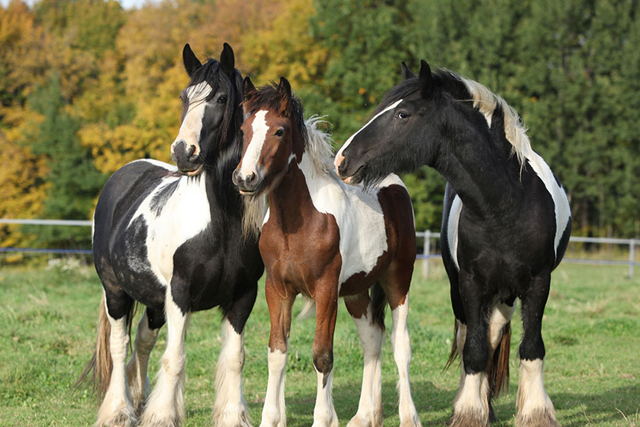
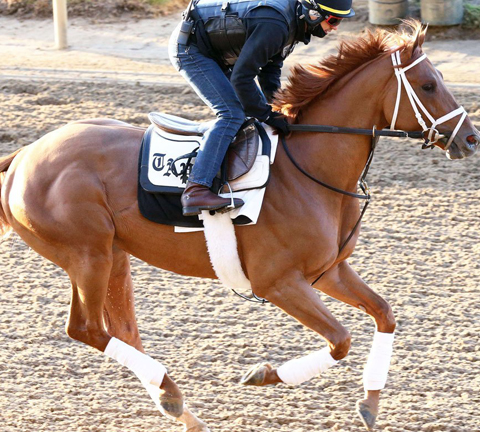
About Show jumping: also known as “stadium jumping”, the competitive sport of riding horses over a course of fences and other obstacles in an arena, with penalty points for errors or faults. An objective grading system that adds time faults for being slow and knocking down rails. The objective is to be “clean” no rails down and the fastest time. Around the course.
Venue: Usually outdoor on grass or dirt-surfaced arena
Show jumping made its first Olympic appearance in 1900, and it reappeared in 1912 at the Stockholm, Sweden, Games. The Stockholm course had 15 jumps, and some of them were contested more than once. The jumps were about 4’7” high, and the water jump was 13′ wide.
Types of show jumps
- Vertical (or upright) – a jump that consists of poles or planks placed one directly above another with no spread, or width, to jump.
- Oxer – two verticals close together, to make the jump wider, also called a spread.
- Triple bar – is a spread fence using three elements of graduating heights.
What is the difference between hunters and show jumpers?
This following article first appeared in the July 1999 issue of Practical Horseman magazine.
The biggest difference between hunters and jumpers is the way they are judged. Expert horsemen judge hunters subjectively on the basis of their style and movement, conformation (in some classes), and overall picture, as well as on the quality of the rounds themselves. In the jumper divisions, judging is entirely objective, based on faults incurred for refusals, runouts, rails down, falls, and seconds over the optimum time. Quite simply, the difference between first and second in a hunter round is a personal judgment; in the jumper round, the fastest clean round always wins–regardless of style.
Hunter classes were originally designed to test the qualities necessary in a field hunter: excellent manners, efficient and comfortable gaits and a good, safe jumping style. They represent the more artistic side of the industry and thus attract more “artsy” horse people.
Jumper classes are the “spills-and-thrills” side of the industry, requiring boldness and athleticism in both horses and riders-and more of a “jock” mentality. Because of its straightforward scoring system, show jumping is usually easier for beginners to appreciate. To do the hunters, you have to be interested in the very detailed, artistic process of producing good performances, and you have to be interested in competing for your own satisfaction. (A lovely round in your eyes may not always be a lovely round in the judge’s eyes!) Lower-level show hunter classes were once considered the best jumping-off point for either sport. Nowadays, starting off in the jumpers is also a very viable option because the jumper divisions include classes for even the lowest-level beginner riders.
Equitation: which, like the hunters, is judged subjectively, but on the basis of rider performance rather than the horse’s–is also a good starting-off point. Although, sadly, some people see equitation as an end in itself, it was designed to instill a solid foundation and interest in riders, enabling them to successfully go on into the hunters and jumpers.
A misconception has arisen that the jumpers require less carefully honed skills and style than do the hunters. People new to the sport may think “All you need to do is get over the jumps and go fast.” But the jumpers require horses that are as good, if not better, and riders at least equally sophisticated. At the top levels of either sport, it’s artistry that prevails.
For more detailed information about these two sports, visit the U.S. Hunter Jumper Association at www.ushja.org. A variety of books have also been written on the subject. Many believe, George Morris’ Hunter Seat Equitation is the best book of all.
FOXHUNTING:
From Wikipedia, the free encyclopedia
This article is about hunting the animal. For other uses, see Fox hunt (disambiguation).
Master of foxhounds leads the field from Powderham Castle in Devon, England, with the hounds in front.
Fox hunting is an activity involving the tracking, and chase of a fox, traditionally a red fox, by trained foxhounds or other scent hounds. A group of unarmed followers, led by a “master of foxhounds” (“master of hounds”), follow the hounds on foot or on horseback.[1]
Fox hunting with hounds, as a formalised activity, originated in England in the sixteenth century.
The Fox Hunt, Alexandre-François Desportes
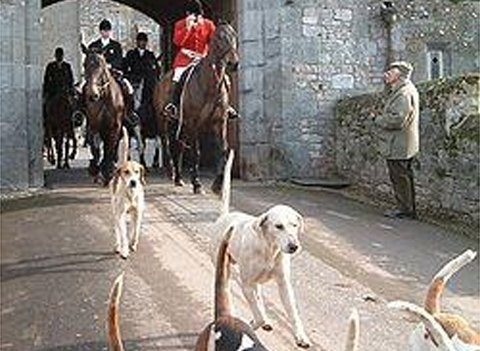
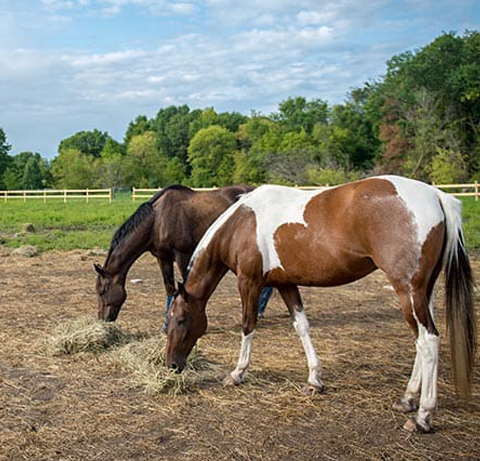
FOXHUNTING:
According to the Masters of Foxhounds Association of America, Englishman Robert Brooke was the first man to import hunting hounds to the United States, bringing his pack of foxhounds to Maryland in 1650 along with his horses.[16] Also around this time, numbers of European red foxes were introduced into the Eastern seaboard of North America for hunting.[17][18] The first organized hunt for the benefit of a group (rather than a single patron) was started by Thomas, sixth Lord Fairfax in 1747.[16] In the United States, George Washington and Thomas Jefferson both kept packs of fox hounds before and after the American Revolutionary War.
In America today, fox hunting is also called “fox chasing”, as it is the practice of many hunts not to actually kill the fox (the red fox is not regarded as a significant pest).[16]
Some hunts may go without catching a fox for several seasons, despite chasing two or more foxes in a single day’s hunting.[38] Foxes are not pursued once they have “gone to ground” (hide in a hole). American fox hunters undertake stewardship of the land, and endeavour to maintain fox populations and habitats as much as possible.[38] In many areas of the eastern United States, the coyote, a natural predator of the red and grey fox, is becoming more prevalent and threatens fox populations in a hunt’s given territory. In some areas, coyote are considered fair game when hunting with foxhounds, even if they are not the intended species being hunted.
In 2013, the Masters of Foxhounds Association of North America listed 163 registered packs in the US and Canada.[39] This number does not include the non-registered (also known as “farmer” or “outlaw”) packs.[38] Baily’s Hunting Directory Lists 163 foxhound or draghound packs in the US and 11 in Canada[40] In some arid parts of the Western United States, where foxes in general are more difficult to locate, coyotes[41] are hunted and, in some cases, bobcats.[42]
There are approximately 26 registered Fox Hunt Clubs in Virginia. The following list provides some of the hunts located within a reasonable proximity of Brookhill Farm. Our clients are primarily members of Oak Ridge Fox Hunt Club, Farmington Hunt Club and Keswick Hunt Club. As professional riders, Lynne and Mark are routinely invited and have hunted with every hunt in the region. If you have a favorite hunt on your wish list, we can get you invited. Capping fees are charged in addition to our fee to provide a horse, bath it, transport, coach and bring you home safely. If interested, Call Mark at (434) 906-3489
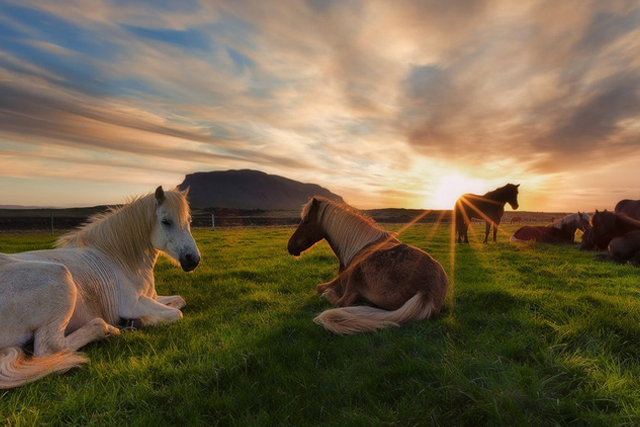
Virginia Fox Hunting Clubs
Blue Ridge Hunt
The Shenandoah Valley
Bedford County Hunt
North area of Bedford County extending to Sweet Briar College in Amherst County
Bull Run Hunt
South of Culpeper, VA
Colonial Fox Hounds
Hunts the area of Quinton, Virginia
Deep Run Hunt Club
Territory of Goochland and Cumberland Counties
Farmington Hunt Club, hunts the area around Charlottesville
Glenmore Hunt
Territory is Augusta County
Keswick Hunt Club, hunts territory around Keswick and Charlottesville
Loudoun Hunt
Territory near Leesburg, Virginia
Middleburg Hunt
Territory is round Middleburg and Aldie, Virginia
Middlebrook Hounds
Territory is south of Middlebrook, Virginia
Oak Ridge Fox Hunt
Territory includes Nelson County
Old Dominion Hounds
Territory is north and west of Warrenton, Virginia
Princess Anne Hunt
Territory is several historic plantations along the James River and around Charles Citty, Virginia
Rappahannock Hunt
Territory is Rappahannock, Culpeper, and Madison Counties
Rockbridge Hunt
Territory is Rockbridge County
Stonewall Hounds
Territory includes parts of Appomattox, Buckingham, Campbell, Charlotte, and Prince Edward Counties in central Virginia
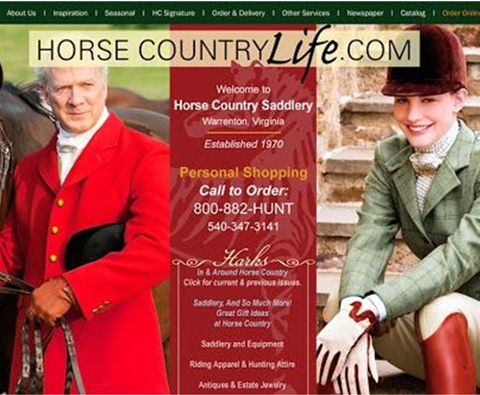
Foxhunting Attire:
http://www.horsecountrylife.com
Competitive Trail Rides:
Our barn normally goes to the Homestead located in Warm Springs Virginia, (circa 1766) twice a year to compete in a trail ride event sponsored by the Virginia Trail Riders. The spring ride allows you to participate in a 100 mile, 50 mile or 30 mile competitive ride over the course of 3 days. Example: the 50 mile ride is 20 miles on day 1, 20 miles on day 2, and 10 miles on day 3. You stay at the world renown resort where many of the US presidents have stayed and home to golf pro Sam Sneed. The fall ride is normally 30 miles over 2 days.
See link attached for more information on the Omni-Homestead Resort>
The Omni Homestead Resort | Hot Springs Resort in Virginia (omnihotels.com)
See link attached to learn more about the Virginia Trail Riders
Hunter Paces:
Hunter Paces are timed and marked trail rides of 7- 10 miles long sponsored by the various hunt clubs during off season fox hunting. Riding attire is casual. Helmets, britches, paddock boots and half chaps can be substituted for tall boots. Entry fees vary but are around $45. Ribbons are awarded to the rider or group of riders that come closest to the optimum time normally set by the Master of Fox Hounds.
We take groups of up to fourteen (14) riders to hunter paces. This is a super fun event enjoyed by all.
Contact us for more information
Brookhill Farm
- 2067 Scottsville Rd, Charlottesville, VA 22902, United States
- (434) 906-3489
- mark.brookhillfarm@gmail.com
SUBSCRIBE
For latest news and updated
- Brookhill Farm Inc - Copyrights 2025
- Privacy Policy
